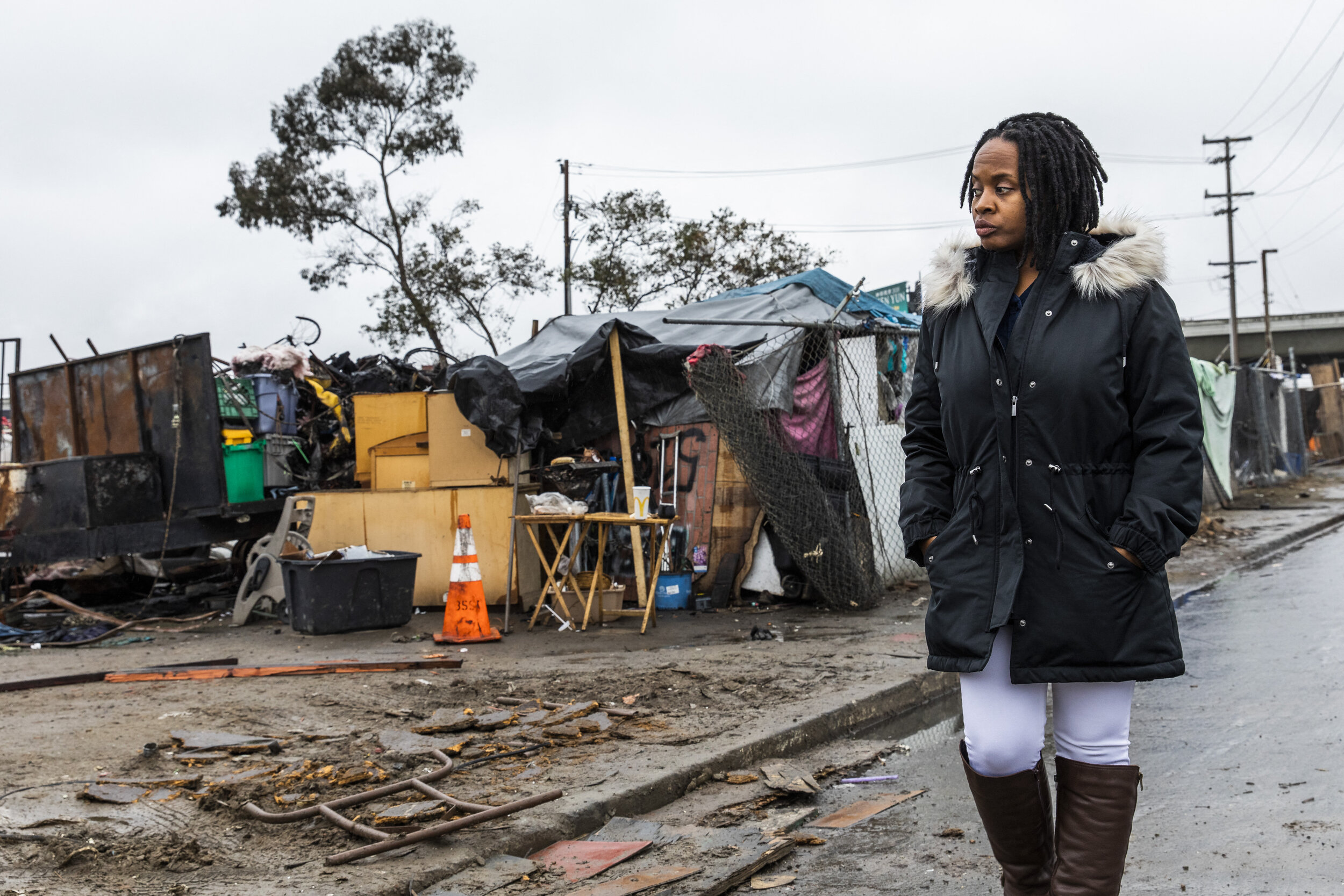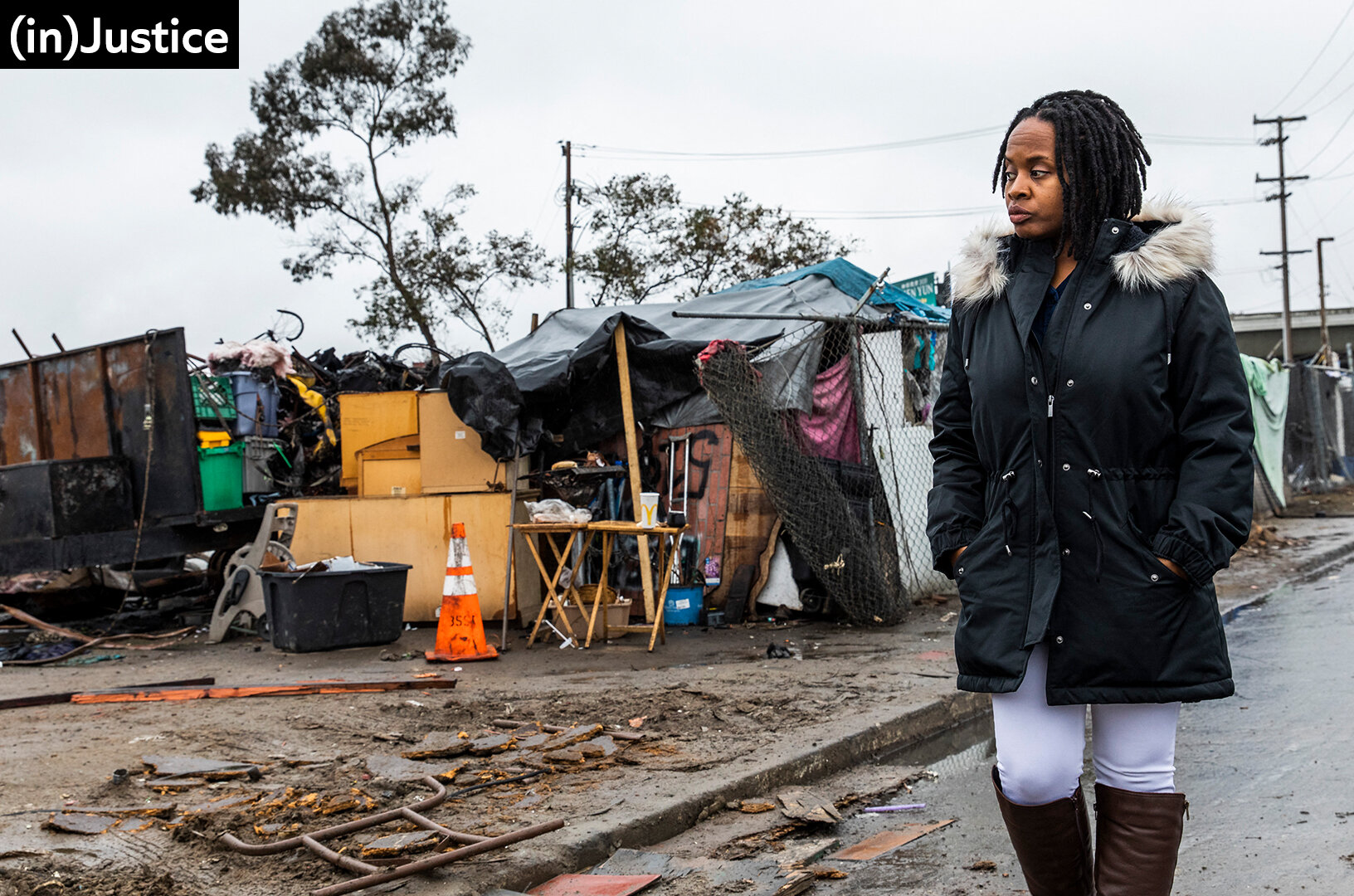How The Oaklandside is Rebuilding Local News
Carroll Fife, the director of the Oakland office for the Alliance of Californians for Community Empowerment walks outside a homeless encampment in Oakland, California on January 28, 2020.
This interview is part of a series highlighting new publications. Past installments have included Africa politics site Africa Is a Country, comic magazine The Nib, Southern publications Scalawag and Southerly, feminist magazine Lux and political journal Spectre.
Local journalists are the unsung (and often underpaid) heroes of the media.
Though they’re usually overshadowed by their national counterparts, they’re the ones in charge of holding local leaders accountable, of keeping constituents and community readership informed, and telling stories that accurately reflect the community. And when a community has lost its trust in the people who report on them, their jobs are even more difficult.
This is just the kind of landscape that a new newsroom in Oakland, The Oaklandside, is learning to navigate. A nonprofit publication committed to community-driven journalism, it launched last summer during the pandemic, with an initial funding of $1.56 million from the Google News Initiative. Since then, it’s worked on building the trust and readership necessary to keep going.
A little more than a year after launch, I spoke with the publication’s managing editor Jacob Simas about what it was like building the operation from the ground up, and how they’ve kept their “blind spots” in check around the city. (This interview has been edited for length and clarity.)
When you say you’re a community-driven publication, what does that mean?
At its core, I think that means trying to center the voices of people in our city who historically have been without power.
I've heard Oakland described as two cities. You have the Oakland flatlands and you have the Oakland Hills, divided by Interstate 580 – a dividing line between the haves and the have-nots in Oakland. It's a racial divider as well. And so we're a publication for the entire city of Oakland, but we very deliberately want to make sure that we're amplifying and centering the voices of those communities in Oakland that have lacked political power in the city, and also that have by and large lacked a voice of their own in the mainstream media covering Oakland.
Oakland lost its newspaper of record years ago, the Oakland Tribune. We now have the East Bay Times. Although they do really tremendous work and they're great journalists there, they don't really have the capacity to cover Oakland deeply on a day-to-day basis. We're a really small newsroom, and so we understand that we can't compete with a lot of the legacy news organizations. But we're very much trying to fill that void, trying to do it differently by being aware of the historical power dynamics in our city.
What were some of the challenges you’ve faced as a new, local newsroom?
Every place is unique, but Oakland is very unique in its diversity and its political history, and history of grassroots movement building. And so you have that really rich legacy. And then you also have the absence of a daily newspaper covering the city politics, culture, schools, housing. And so for us, stepping into that void has been a really tremendous opportunity.
At the same time, I think we're stepping into a culture in Oakland where a lot of communities feel that news media hasn't historically been working for them, or reporting on the stories that matter to them, or telling stories about their neighborhoods and communities in a way that really reflects them.
Much of the past year has been about establishing trust through our work and reporting … really letting our work speak for itself, and making sure that with every story, we're thinking about the framing, whose voices we're amplifying, and how our images and photography are having an impact on and resonating with our audience.
How are you working with people in the community to define your coverage?
We started off with a team of three editors and four reporters. We've recently grown [and] added a reporter and a photographer. We made a point of assembling a small team that was really reflecting the diversity of the town we’re covering. But even then we have our blind spots. So how do we hold ourselves accountable as a newsroom?
One of the key things we did was devised a system we call the “mission metrics program.” With every story we do, we have a list of eight to 10 metrics: Is this story amplifying the voices of underrepresented Oaklanders? Is this story holding powers to account in Oakland? Is this story reflecting Oakland’s values and not just its deficits? Every time we do a story, we tick the boxes – how many of these metrics is this story actually delivering on?
And then we took it a step further to say we need community feedback. Are we hitting these metrics? Are we measuring these things the right way? And so we put together a community advisory board. We recruited seven community advisors, one for each Oakland district. We wanted a mix of folks from different racial backgrounds and ethnic backgrounds. And for this initial cohort, we put an extra emphasis on folks who have been in Oakland for at least 10 years.
And we worked with them over the course of several months in a pilot program where they were giving us weekly feedback on our stories, and letting us know what's working, what's not. What do you think about the language we're using? Are these stories resonating with you? Are there things that we’re missing?
We also held several virtual meetings with those advisors to have some pretty deep conversations with our reporting staff about their work. We're actually in the process of assessing that pilot program and looking at all of the feedback, synthesizing that and figuring out, what are the things that we want to do better, what are the things that are already working, and can we continue to recruit community advisors and have this be a rolling process for us throughout the year?
How does The Oaklandside regard “objectivity” while writing about inequality and power?
Personally speaking (not on behalf of anyone else in my newsroom), I've never really liked the word “objectivity” as applied to journalism. That's not really a human thing, objectivity.
What I do latch on to … as a journalist, is fairness, and I realize that other news organizations have co-opted that word, but I've always been more partial to the word “fair,” because I think as people we do have the ability to be fair. I think part of being fair is acknowledging power dynamics that exist in the places that we report on, and that have historically impacted narratives as well.
So one of the ways that we integrate these ideas into our own reporting is that we put a lot of value on providing historical context.
Our housing and homelessness reporter, Natalie Orenstein, did a piece recently about zoning laws in Oakland and how they've impacted neighborhoods. It was incredibly rich and readable because she broke down the history of why the zoning laws are what they are, and how they've shaped the city that we live in, and explained a lot of the reasons why we do have this very stark class divide above and below the 580.
Our education equity reporter, Ashley McBride, has covered how the Oakland Unified School District is moving away from having a police force on school campuses, including a standout piece that spoke to the history of school policing in Oakland.
We're not just reporting on the news. We're also telling the story of Oakland's history and explaining how we got here. In doing so, you can really unpack and explain some of the power dynamics, and not just call them out, [but] explain the history and the systems that make it so.





